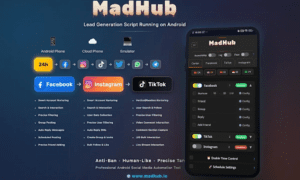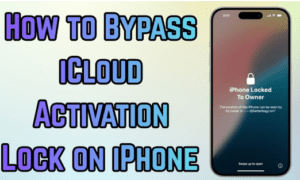Adaptive learning and personalized learning are two distinct approaches that aim to enhance the learning experience by catering to individual needs and preferences. Although both share a common goal of improving learner outcomes, they differ significantly in how they achieve this. Let’s delve into what makes each method unique and how they differ in key areas like learner involvement, data usage, and the overall learning journey.
Adaptive learning refers to the use of technology to deliver customized learning experiences. In this approach, adaptive learning platforms analyze data on the learner’s performance, strengths, and weaknesses to adjust the learning path in real-time. The system continually adapts to the learner’s needs by providing recommendations for learning materials, activities, and assessments. This approach is designed to offer a tailored learning experience, helping learners focus on areas that need improvement and progress at their own pace.
Unlike traditional teaching methods, where all learners follow the same curriculum, adaptive learning adjusts the content dynamically, ensuring that each learner receives what they need when they need it. This system-driven approach can scale to support hundreds or thousands of learners, offering a customized learning experience to everyone, regardless of their starting point.
What Is Personalized Learning?
On the other hand, personalized learning places the learner in the driver’s seat, giving them greater control over their educational journey. Rather than relying on an algorithm or system to adjust the content, learners actively shape their learning path based on their own interests, goals, and needs. This approach encourages learners to take ownership of their learning experience by selecting materials, defining their learning objectives, and setting their own pace.
In personalized learning, the focus is on the individual’s preferences. Learners decide how they want to learn and what they want to focus on, making it a more flexible and adaptable approach. This method is particularly useful in professional and self-directed learning environments, where learners may have specific career goals or personal interests that drive their learning choices.
How Adaptive Learning Works
Adaptive learning technology uses advanced algorithms and data analytics to assess a learner’s progress continuously. Based on the data collected from assessments, quizzes, and interactions, the system recommends learning materials and activities that suit the learner’s current level of understanding. This data-driven approach allows learners to improve their skills more quickly by focusing on areas that need development.
There are two primary types of adaptivity within this approach: designed adaptivity and algorithmic adaptivity.
- Designed adaptivity involves an expert or educator creating a structured learning sequence. The technology then adjusts the sequence based on learner interactions, providing feedback and additional resources where necessary.
- Algorithmic adaptivity, on the other hand, relies on algorithms to make decisions about what the learner should experience next. The system assesses what the learner knows and identifies the most appropriate next steps.
This method ensures that learning remains engaging and relevant, providing real-time feedback to learners and keeping them on track.
How Personalized Learning Works
Personalized learning revolves around the creation of learner profiles and customized learning paths. Learner profiles contain information such as learning background, preferences, goals, and prior assessments. These profiles help instructors and learning platforms offer tailored guidance and resources to meet each learner’s specific needs.
One of the key elements of personalized learning is competency-based progression. Learners move through their learning journey based on their mastery of certain skills or topics, rather than following a rigid schedule. Regular assessments allow learners to advance at their own pace, ensuring they don’t get overwhelmed or left behind.
Another important aspect is data-driven instruction, where information from assessments and feedback is used to continually adapt the learning path. Unlike adaptive learning, however, personalized learning relies more on learner inputs and preferences rather than system-driven recommendations.
Lastly, flexible learning environments play a critical role in personalized learning. Learners can engage with content in a way that suits their lifestyle, whether through online modules, in-person sessions, or a hybrid approach. This flexibility empowers individuals to learn in environments that reduce stress and distractions, making the overall learning experience more enjoyable and effective.
Adaptive Learning vs. Personalized Learning
While adaptive learning and personalized learning share the goal of enhancing learner outcomes, they differ in key ways:
- Learner Involvement: In adaptive learning, the system takes the lead in adjusting the learning path based on data. In personalized learning, the learner plays a more active role in designing their own experience.
- Data Usage: Adaptive learning is heavily data-driven, using complex algorithms to monitor progress and make real-time adjustments. Personalized learning relies more on the learner’s inputs, preferences, and goals, with less dependence on data analytics.
- Learning Path Control: In adaptive learning, the platform controls the learning sequence based on performance. In personalized learning, the individual has greater control over the pace, topics, and methods of learning.
- Flexibility: Personalized learning offers more flexibility in terms of learning environments and scheduling, allowing learners to tailor their experience to their lifestyle. Adaptive learning, while flexible in content delivery, often relies on structured paths defined by data analytics.
Pros and Cons
Both approaches have their advantages and drawbacks:
Adaptive Learning Pros:
- Provides customized learning recommendations.
- Helps learners focus on areas that need improvement.
- Engages learners through interactive content.
Adaptive Learning Cons:
- Requires substantial data collection and analysis.
- Can be expensive to develop and maintain.
Personalized Learning Pros:
- Encourages learners to pursue their own goals.
- Offers flexibility in how and when learning occurs.
- Promotes critical thinking and creativity.
Personalized Learning Cons:
- Can be challenging to implement in large or resource-limited settings.
- Requires significant planning to ensure access to resources and support.
Get Started with Curiously
Whether you’re looking to adopt adaptive learning to enhance learning efficiency or embrace personalized learning for a more flexible, self-directed approach, Curiously can help you achieve your goals. Our platform allows educators, coaches, and influencers to build customized knowledge-based AI companions that cater to their learners’ unique needs and interests.
Take the next step in expanding your coaching portfolio with Curiously. Empower your learners with personalized, engaging learning experiences today!



































